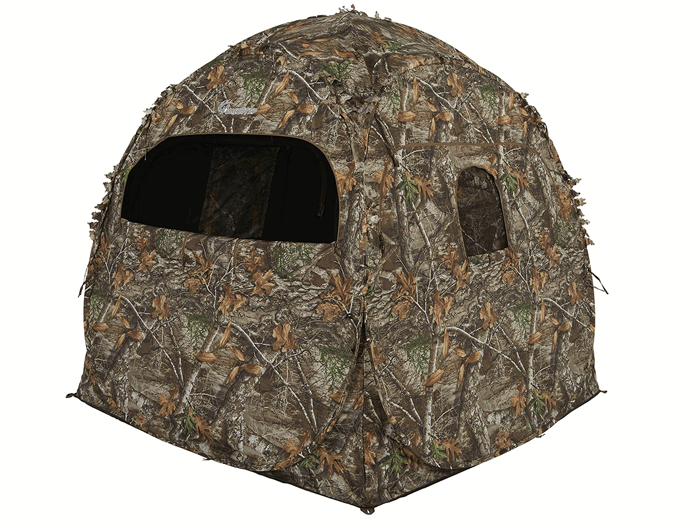If you’re looking to take your bird photography to the next level, using a wildlife photography hide can be a great way to do it. Wildlife photography hides are essentially structures or areas that provide camouflage for photographers as they take photos of animals in their natural habitat. This allows you to get closer to your subject without disturbing them, which can lead to better shots. Here are a few tips on how to use wildlife photography hides for the best results

1. Wildlife Photography Hide: Wear Camouflage Clothing to Blend in With Your Surroundings
The easiest and simplest bird hide is camouflage clothing. This is the best choice for subjects that are always on the move.
The biggest advantage of camouflage clothing is that it allows you to move as you wish and it doesn’t cost you much money. Besides bird photography, you can also use it for other wildlife photography.
You can also take your camouflage outfit to the next level and buy a ghillie suit. It is an outfit designed for hunters and makes you blend in well with your environment. They are light and breathable, but they make you look like a monster from the swamp.
If you want to photograph birds in the snow, you can dress up in white pants and a jacket, and complete your outfit with white pillowcases or oven gloves. You could wrap your camera and tripod with white bed sheets or a white potato sack.

2. Use a Body Blind for Mobility on a One-Day Shoot
Photography body blinds consist of a drape with a dedicated opening for your camera. They are great choices when you find a spot that birds often use, like a tree or a pond.
You can get to the spot early and set up your hide, spending the day inside with bird watching and taking photos.
Portable photography blinds are great because they cover not only you but also your camera, tripod and other gear. Plus, they hide your movements, which would scare off your subjects otherwise.
Their disadvantage is that the air does not circulate well inside of them. On a hot sunny day, a portable photography blind might feel like a sauna.

3. Shoot from a Pop-Up Blind to be Able to Return to Your Spot
A pop-up blind is useful when you find a photography spot that you wish to return to several times. You can set it up once and leave it there until you are ready to leave.
The most common pop-up blinds are small tents. They have small, customizable windows for you and your camera. They are great because they hide all your gear and are spacious enough for accommodating you for long hours. Some can even fit two people inside.
The biggest disadvantage of pop-up blind tents is that they provide the least mobility, and you need more planning and time to set them up. They are big structures that might confuse the birds, and they can get scared.
It’s a smart idea to set up your photo blind a few days before you start taking photos. This way, the animals get used to its sight and will think it is part of the environment.
If you don’t want to invest in a tent-like pop-up blind, you can also buy a camouflage canvas hide. Fix it to your tripod with a few sticks, and you have your blind.

4. Use a Floating Blind to Shoot in Lakes, Ponds and Swamps
If you are photographing birds that are living around lakes, swamps or ponds, floating bird blinds are the best options for you.
It is a floating platform that can accommodate your camera. It has an ergonomic design for smooth sailing. It also has a cover that makes it look like part of the environment.
A floating blind is an excellent choice for water-level and a close-up shot of water birds.
The drawback is that there are only a few types of floating blinds available in the market. Their prices are pretty high due to their professional design.
One of the best models available in the market is called Floating Hide.

5. Build a Temporary Hide From Grass and Branches
It can happen that you don’t have your usual equipment with you but you suddenly need a wildlife photography hide. A creative solution is to gather some branches and grass around and build your own hide.
Make sure to gather plants that are already on the ground, so you don’t harm nature by building your hide.
You can even practice building a hide in your own garden. This way, you will know what structure works well. You can even try it and photograph birds without leaving your home.

6. Use Ordinary Objects to Hide From the Birds
Think about using ordinary objects as wildlife photography blinds and hides. Consider using a garden shed with windows on it.
Or build a simple structure from plywood. You can make it waterproof by using wooden batons to keep the walls and the roof together. If you place a rug or a carpet on its floor, you can even decrease the noise you make inside.
You could even hide in your stationary car and do the bird watching from there. Many species are used to vehicles and cars, and they won’t be scared off.

Conclusion
Using bird blinds and hides for wildlife photography can make your job easier. It allows you to get closer and stay unnoticed.
This special equipment doesn’t bother the birds, so they behave in a natural way. This allows you to capture authentic photos of their undisturbed habits.

